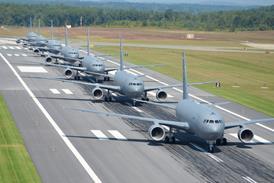ALAN GEORGE BRUSSELS
Europe's transport ministers have reached broad agreement on the form and functions of a European Aviation Safety Agency (EASA), paving the way for the project's approval next year.
Meeting in Luxembourg in late June, the ministers agreed on all but three issues: whether non-European aircraft would be subject to EASA's scope; how its executive director would be nominated and what one well-placed source describes as "technical legal issues which need further study". He says these are "internal issues, not strategic questions".
The first two issues have since been resolved, according to Brussels insiders, who say that aircraft operated by third- country operators will almost certainly be excluded from EASA's purview, and that the agency's director will probably be nominated by its board.
At its next meeting, in October, the European Council of Ministers is expected formally to adopt a text setting out EASA's role and structure. In July, meanwhile, the European Parliament's Regional Affairs, Transport & Tourism Committee adopted a report on EASA and this will go before the parliament's plenary session in September. Europe's protracted decision-making procedure, requiring accord between Parliament and Council, means that final approval may not come before June 2002.
EASA's establishment will effectively mean the transformation of the Amsterdam-based group of national civil aviation authorities, the Joint Aviation Authorities (JAA), into an agency of the European Union (EU).
While the JAA's directives are not legally binding, EASA will have administrative and legal powers. The issue of airworthiness certificates for new aircraft will be undertaken directly by EASA. It will also be empowered to set technical and other standards which will be legally binding in all 15 EU member states.
The project started in the mid-1990s. Initially, EASA was to have been a broad international body. A draft convention for EASA had already been prepared when the European Commissioners were forced to resign en masse in March 1999. One of the early decisions of Loyola de Palacio, incoming transport commissioner, was that EASA should be a purely EU body. The change of direction was approved by ministers in late 1999. Amsterdam and Cologne are under consideration for EASA's location.
EC officials involved with the EASA project are conscious that non-EU member states which belong to the JAA will find themselves without an effective international framework following the new agency's establishment. "We've had talks on how they could be associated with the EU system and it's an ongoing process," says a senior official.
Another important issue is the future of bilateral agreements between EU member states and the USA and Canada on the mutual recognition of aircraft and product certification. "We can't afford to disrupt that system," says a Brussels official. Talks are scheduled on this issue between the two sides.
On the issues of non-EU members of the JAA and mutual recognition of certification, the official says: "There is a real willingness by the EU not to go it alone. We don't want to act in isolation."
Source: Airline Business























